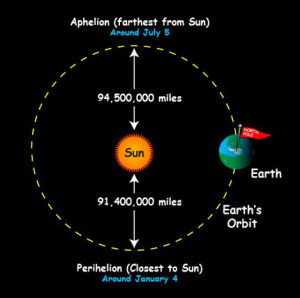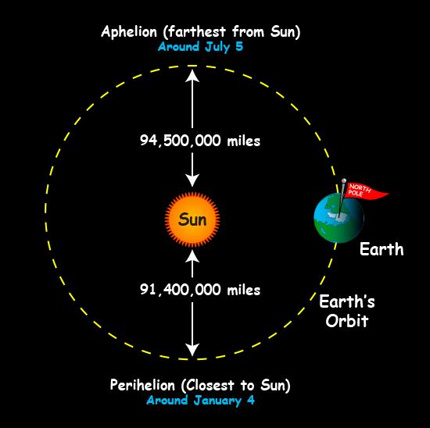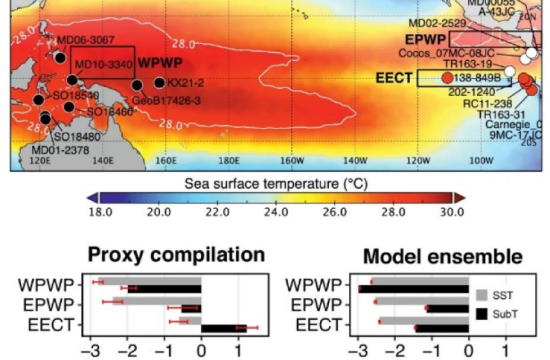 Once in a year, our earth reaches to its perihelion which is the nearest point to the sun and aphelion which is the farthest point to the sun. The earth experience this annually event perihelion actually during the month January when the Northern Hemisphere is experiencing winter and aphelion during the month of July when the Northern Hemisphere is experiencing summer.
Once in a year, our earth reaches to its perihelion which is the nearest point to the sun and aphelion which is the farthest point to the sun. The earth experience this annually event perihelion actually during the month January when the Northern Hemisphere is experiencing winter and aphelion during the month of July when the Northern Hemisphere is experiencing summer.
This year, our earth will reach to its nearest point perihelion on January 4, 2015 at 6:36 UTC (01:36 a.m. EST) before dawn from North American longitudes. Here perihelion is a Greek word where peri means near, and helios means sun. During perihelion our earth is about 5 million kilometers – or 3 million miles – closer to the sun in early January than in early July.
The number of people think that change in distance of the earth with the sun is the reason for the change in season of our earth which is not the fact. Instead the fact is that the orbit of our earth is so close to being circular,so it’s mostly the tilt of our world’s axis that creates winter and summer. In winter, your part of Earth is tilted away from the sun. In summer, your part of Earth is tilted toward the sun. The day of maximum tilt toward or away from the sun is the December or June solstice.
Though the variation in distance of the earth to the sun is not responsible for the seasons, Earth’s closest and farthest points to the sun do affect seasonal lengths. When the Earth comes closest to the sun for the year, as around now, our world is moving fastest in orbit around the sun. Earth is rushing along now at 30.3 kilometers per second (almost 19 miles per second) – moving about a kilometer per second faster than when Earth is farthest from the sun in early July. Thus the Northern Hemisphere winter (Southern Hemisphere summer) is the shortest season as Earth rushes from the solstice in December to the equinox in March.
In the Northern Hemisphere, the summer season (June solstice to September equinox) lasts nearly 5 days longer than our winter season. And, of course, the corresponding seasons in the Southern Hemisphere are opposite. Southern Hemisphere winter is nearly 5 days longer than Southern Hemisphere summer.
It’s all due to the shape of Earth’s orbit. The shape is an ellipse, like a circle someone sat down on and squashed. The elliptical shape of Earth’s orbit causes the variation in the length of the seasons – and brings us closest to the sun in January.








